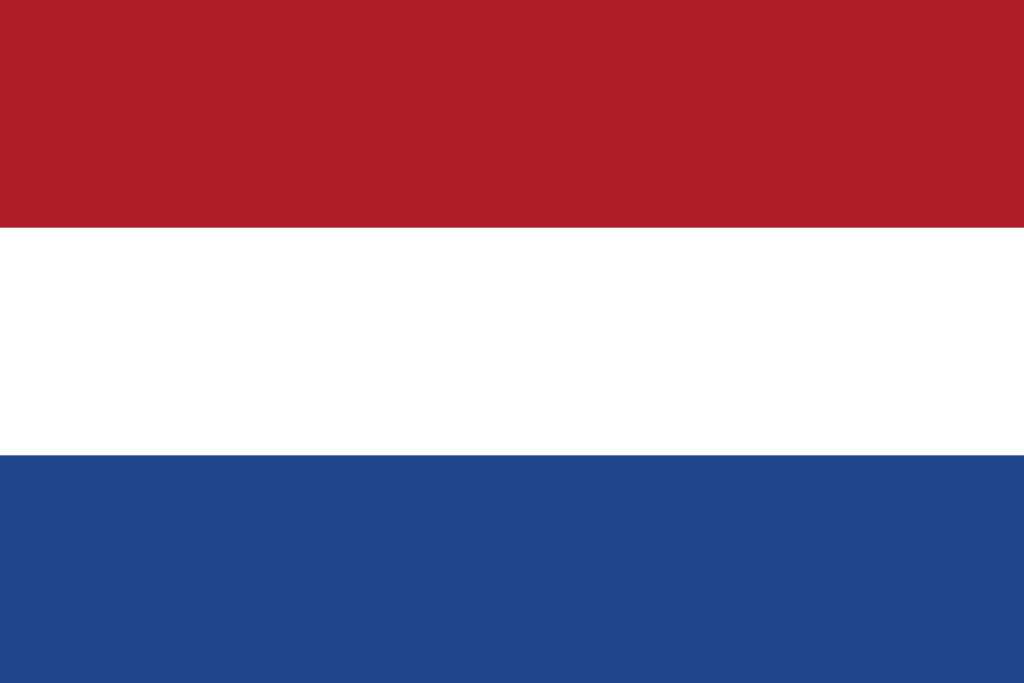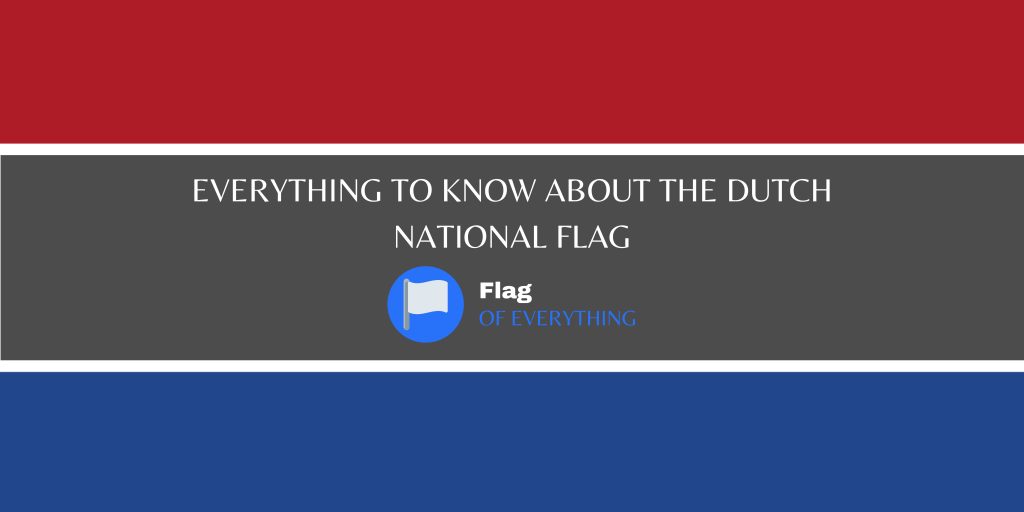The Dutch national flag, often referred to as the “Netherlands flag,” is a simple yet distinctive tricolor emblem that carries profound meaning for the nation. In this exploration, we’ll delve into the significance and symbolism of the Dutch flag while addressing common questions related to its name, historical variations, and its vibrant orange past.
It is often referred to as both the Dutch flag and the Netherlands flag. The official name of the flag is the “Flag of the Netherlands” or “Netherlands Tricolor,” but it is colloquially known as the Dutch flag due to its association with the Dutch people and their nation.
“Dutch” is often used to refer to people, products, or things associated with the Netherlands. However, “Netherlands” is the formal name of the country. “Dutch” primarily pertains to the culture, language, and nationality of the people living in the Netherlands.
The Dutch national flag has undergone several changes in its history, primarily related to the ruling houses and historical events. The most notable change occurred in the 17th century when the orange stripe was replaced by red. This change was attributed to various reasons, including practicality in manufacturing, visibility at sea, and a shift in political leadership.
The Dutch flag was originally orange, blue, and white, with orange symbolizing the House of Orange-Nassau, a prominent Dutch royal family. However, it was changed to red in the 17th century, as red dyes were more readily available and durable. The flag retained the red, white, and blue colors but without the orange stripe, which led to the modern tricolor design.

What is the shape of the Dutch national flag?
The Dutch national flag exhibits sharpness and keenness in its design. It consists of three horizontal bands, with the colors from top to bottom being red, white, and blue. These bands have well-defined edges, creating a clear and easily recognizable symbol of the Netherlands.
The Dutch flag embraces angularity through its rectangular shape and the sharp division between its horizontal bands. The flag’s sides form right angles, symbolizing order, stability, and the nation’s commitment to its values.
The Dutch flag does not display narrowing. Its width remains consistent from left to right, emphasizing a balanced and harmonious appearance that signifies unity among the Dutch people.
The Dutch national flag does not prominently incorporate curvature or curves. Its design relies on straight lines and a simple three-band pattern, emphasizing clarity and straightforward symbolism.
The Dutch flag does not emphasize roundness in its design. The flag’s elements, primarily the three horizontal bands, are characterized by sharp angles and distinct edges, reflecting the Netherlands’ uncomplicated and historic symbolism.
The Dutch flag is characterized by straightness in its design, with its precise red, white, and blue horizontal bands. These straight lines represent the Netherlands’ commitment to order, tradition, and the values that have shaped the nation.
The Dutch flag does not showcase stratification. It consists of three equal horizontal bands, making it a straightforward and unified design that underscores the importance of national unity and equality among its people.
How wide is the Dutch national flag?
The width of the Dutch national flag holds significance, measuring approximately 6.6 feet or 2 meters in standard scales. This width allows the flag to be prominently displayed during national events and celebrations, symbolizing the Netherlands’ history, unity, and national pride.
How high is the Dutch national flag?
The height of the Dutch national flag stands at around 4.4 feet or 1.3 meters in standard scales. This balanced height complements its width, ensuring that the flag’s design is presented with precision and respect, embodying the Netherlands’ commitment to independence, democracy, and heritage.
What is the aspect ratio of the Dutch national flag?
The Dutch national flag adheres to an aspect ratio of 2:3, creating a harmonious and visually appealing design. This carefully chosen ratio ensures that the flag’s proportions remain faithful to its intended representation, symbolizing the Netherlands’ historical legacy and national identity.
What colors does the Dutch national flag use?
The Dutch national flag has a total of 3 colors: red, white and blue. The exact color codes are given in the table below.
| Red | White | Blue | |
| HEX | #C8102E | #FFFFFF | #003DA5 |
| RGB | 200, 16, 46 | 255, 255, 255 | 0, 61, 165 |
| CMYK | 0, 100, 80, 5 | N. A. | 100, 76, 0, 9 |
| Pantone | 186 | N. A. | 293 |
| RAL | 3028 | N. A. | 5005 |
History of the Dutch national flag
The history of the Dutch national flag, often referred to as the dates back centuries and is deeply intertwined with the Netherlands’ quest for independence and sovereignty. The flag’s design, featuring horizontal stripes of red, white, and blue, has historical significance and represents the nation’s enduring commitment to democracy, freedom, and its historical struggles.
When was the Dutch national flag created?
The modern version of the Dutch national flag, with its red, white, and blue horizontal stripes, has a rich historical legacy. It has been in use since the 17th century and is one of the oldest national flags in the world. It symbolizes the Netherlands’ historical journey towards democracy, independence, and national pride.
Who made the Dutch national flag?
The design of the Dutch national flag, with its horizontal stripes of red, white, and blue, reflects the Netherlands’ historical heritage and was not created by a specific individual. It symbolizes the nation’s commitment to independence, democracy, and cultural identity.
How much did it cost to create the Dutch national flag?
The creation of the Dutch national flag was not associated with a specific monetary cost, as it represents the Netherlands’ historical journey towards democracy, independence, and national pride. It embodies the nation’s values and commitment to self-determination.
What is the meaning of the Dutch national flag?
The red, white, and blue colors on the Dutch national flag, arranged horizontally from top to bottom, capture the essence of the Netherlands’ history, values, and identity. The tricolor flag serves as a powerful symbol of the nation’s unity, bravery, commitment to peace, and the enduring spirit of its people. There are no symbols on the Dutch national flag. The colors on the Dutch national flag and their meanings are shown below.
- Red: The red color on the Dutch national flag represents bravery, valor, and the sacrifices made by the Dutch people throughout their history. It symbolizes the Dutch people’s determination to defend their homeland and their commitment to justice and freedom.
- White: The white color on the flag symbolizes peace, honesty, and purity. It reflects the Dutch people’s desire for a peaceful existence and their commitment to moral and ethical values.
- Blue: The blue color embodies vigilance, loyalty, and truth. It signifies the Dutch people’s dedication to upholding the principles of democracy and their commitment to transparency and accountability in governance.
How to fly the Dutch national flag?
The Dutch national flag is flown with great respect and in accordance with the nation’s customs and traditions. Proper flag etiquette includes displaying the flag prominently during national holidays and events, as well as raising it briskly and lowering it ceremoniously. The most important etiquette of the Dutch flag is described below.
- Positioning: Place the flagpole securely in the ground or on a suitable mounting structure, ensuring that the flag remains visible and unobstructed.
- Orientation: When raising the flag, make sure the red band is on the top, followed by the white band in the middle, and the blue band on the bottom. This arrangement preserves the correct order of the Dutch flag’s colors.
- Raising and Lowering: Raise the flag briskly in the morning and lower it ceremoniously at sunset. If you choose to keep it up overnight, ensure it is properly illuminated.
- Respect: Handle the flag with care and avoid letting it touch the ground. It’s a symbol of the Netherlands’ rich heritage and should be treated with respect.
Do Dutch citizens respect the Dutch national flag?
Yes. Dutch citizens do respect the Dutch national flag. Dutch citizens hold deep reverence for their national flag which symbolizes the nation’s history, independence, and democratic values. Displaying the flag with honor and pride is a testament to the Dutch people’s dedication to democracy, freedom, and their historical legacy.
Is the Dutch national flag disrespectful?
No, the Dutch national flag is not disrespectful. On the contrary, it is a revered symbol of the Netherlands’ democratic ideals, independence, and historical struggles. Treating the flag with dignity and respect reflects the nation’s values and reverence for its national identity and sovereignty.
What flags are similar to the Dutch national flag?
Below are the national flags that resemble the Dutch national flag.
- Flag of Luxembourg: The flag of Luxembourg features horizontal bands of red, white, and blue, similar to the Dutch flag. However, Luxembourg’s flag uses a lighter shade of blue and a slightly different design.
- Flag of the United States: The flag of the United States, features horizontal stripes of red and white, with a blue field in the upper-left corner containing white stars. While the colors are similar to the Dutch flag, the design and symbolism are distinct.

